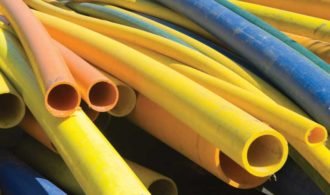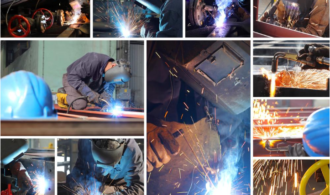High-pressure nylon tubing is designed for applications in wide range of fields, including automobile, transport, and chemical industries. It is commonly used in the vacuum, grease, air, robotics, brake lines, hydraulic hoses, and high-pressure gas lines. Nylon Tubing handles diluted acids, organic solvents, oils, hydraulic fluids, and alkalis. You can use nylon tubing in applications that require good abrasion resistance, strength, and stiffness at high temperatures. The tubing displays high tensile strength and excellent coupling retention in heat, pressure, and vibration environments; this makes it a more reasonable and realistic solution for a variety of growing industrial applications.
Applications of Nylon Tubing
- Transport and automobile industries extensively use High-pressure nylon tubing . Fuel lines use nylon tubing for diesel and petrol and the other uses for Nylon Tubing are in gasoline lines, condensed airlines on pneumatic control systems.
- Textile machinery uses nylon tubes for lubes and airlines.
- Transportation of comestible fluids such as milk and beer and biological fluids such as antitoxins, blood, etc., all takes place through nylon tube lines.
- Instrumentation lines, refrigerant lines, process piping systems, vapor lines, marine control systems, all rely on high-pressure nylon tubing.
- Chemical industries also use nylon tubing for transporting esters, ketones, hydrocarbon, and many other chemical compounds.
- You can also find nylon tube lines in centralized lubrication systems.
- Lubricating oil or grease lines also use nylon tubing in the automobile industry.
- Numerous industries use tubing for gas lines.
Features and Benefits of Nylon Tubing
Lightness: Nylon Tubing has a density of 1.04 – 1.14, which is much lighter than copper tubing (about eight times). This makes nylon tubes easy to install and maintain.
Cost factor: In addition to the actual expense of the tubing, there other economic factors make high-pressure nylon tubing more preferable; tube line connections are simplified, elimination of Preforming, and finally, simple, easy, and quick installation.
Low Outer Diameter/Inner Diameter ratio: Nylon Tubing has low O.D/I. D ratio when compared to another non-metallic tubing. This makes compact tubing connection possible for a given working pressure and inner diameter.
Flexibility: Nylon Tubing is pliable and remains flexible if bent cold, you can also change the formation of tubing just by bending it while it is blazing.
Stability: High-pressure nylon tubing stays dimensionally stable; this is due to the resistance to temperature and low moisture absorption. It can withstand a large scale of temperature, ranging from -40˚C to 90˚C (continuous) 130˚C (sporadic).
Chemical resistance: Nylon tube lines have excellent resistance to chemical compounds, including solvents, greases, oils, propellants, petrol, gasoline, diesel, and more. Also, nylon tubing is impermeable to oxygen, fron, and ozone.
Low-pressure losses: Nylon Tubing have a smooth internal surface; this prevents the pressure loss. All in all, nylon tubing have a low-pressure loss when compared to metal tubing.
Withstand high pressure: High-pressure nylon tubing resists heat depending on the diameter, wall thickness, the purpose to which the tube has been used.
Excellent resistance: Nylon Tubing have an outstanding resistance to weather, abrasion, vibration, temperature, crushing, cold flow, and more.
Perfect end fittings: Since nylon tubes are resistance to crushing and cold flow, the end fittings are connected firmly and thoroughly, and will not tear from its connectors.
Availability:Nylon Tubing are available in different lengths. You can also get the customized length, which is ready for connection. They are available in a variety of colours, including red, black, green, blue, orange, yellow, and more.
So be aware of these aspects of high-pressure nylon tubing.




